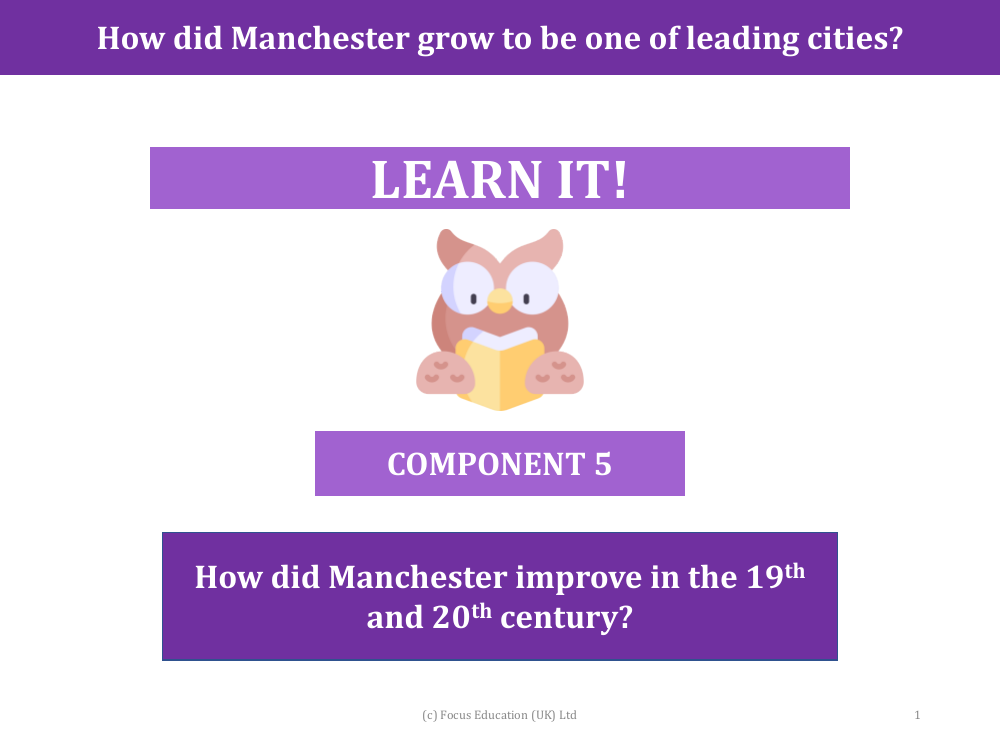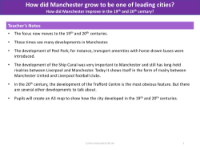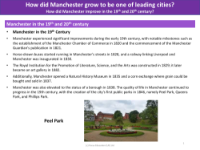How did Manchester improve in the 19th and 20th centuries? - Presentation

History Resource Description
During the 19th century, Manchester underwent a transformation, becoming a hub of progress and innovation. It started with the establishment of the Manchester Chamber of Commerce in 1820, followed by the first publication of the Manchester Guardian in 1821. The city's transport network was revolutionised with the introduction of horse-drawn buses in 1828 and the inauguration of the railway connecting Manchester and Liverpool in 1830. Cultural institutions such as the Royal Institution, which later became an art gallery, and the Natural History Museum, were established, enriching the city's educational and cultural landscape. The quality of life was also enhanced with the creation of the city's first public parks, including Peel Park, Queens Park, and Phillips Park in 1846. Manchester's status as a borough was recognised in 1838, and it continued to flourish with its manufacturing industry, gaining global recognition for producing textiles and other goods. By the end of the 19th century, Manchester had developed its own water supply, opened its first public library, and was granted city status, with the Manchester Ship Canal opening in 1894, turning it into an inland port.
Advancing into the 20th century, Manchester continued to evolve with significant developments like the opening of the John Rylands Library in 1900 and the founding of Manchester University in 1903. Despite the decline of traditional industries like cotton and engineering during the Great Depression, the city adapted, with service industries gradually taking over. The late 20th century saw the rise of tourism, marked by the opening of the Museum of Science and Industry and the Museum of Transport. Urban regeneration projects, such as the transformation of Castlefield into an Urban Heritage Park, highlighted Manchester's commitment to preserving its history while modernising. The construction of the Arndale Centre, efforts to improve housing, and the emergence of a vibrant Chinatown further symbolised the city's resilience and growth. The introduction of the Metrolink tram system and the opening of the Trafford Shopping Centre in the 1990s underlined Manchester's status as a leading city, even in the face of adversity such as the 1996 IRA bombings, which led to a remarkable rebuilding of the city centre.



